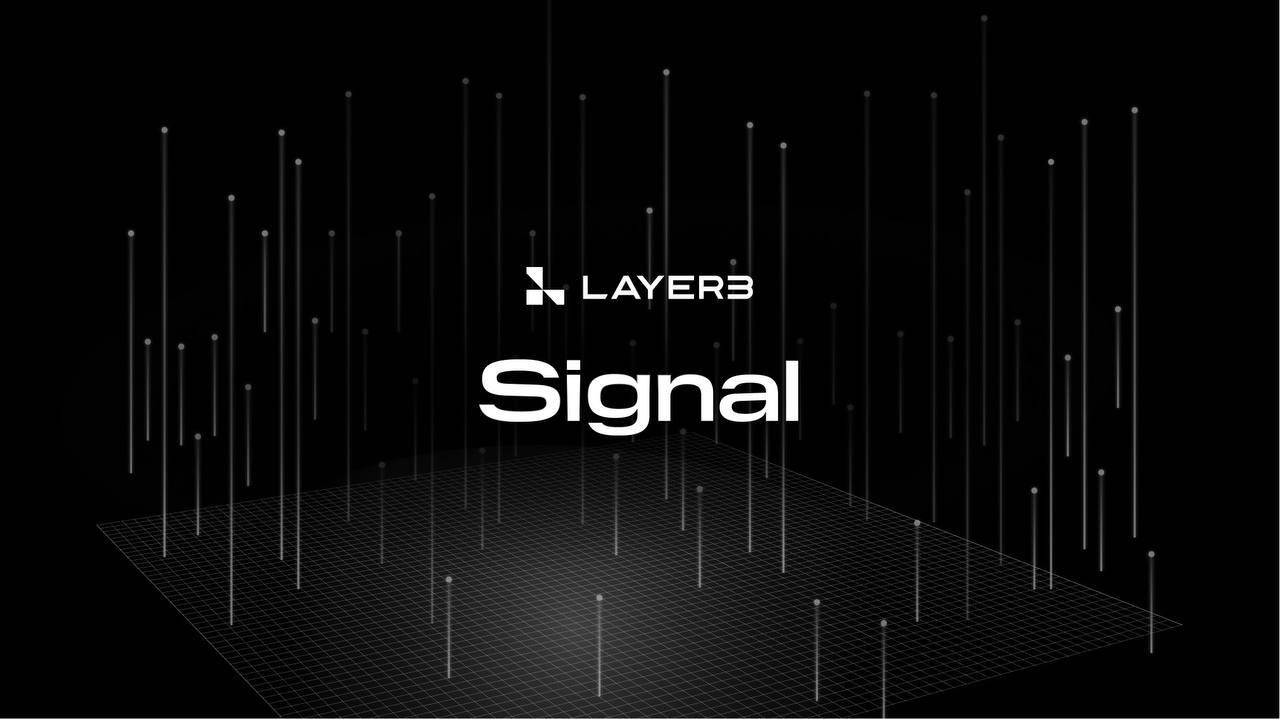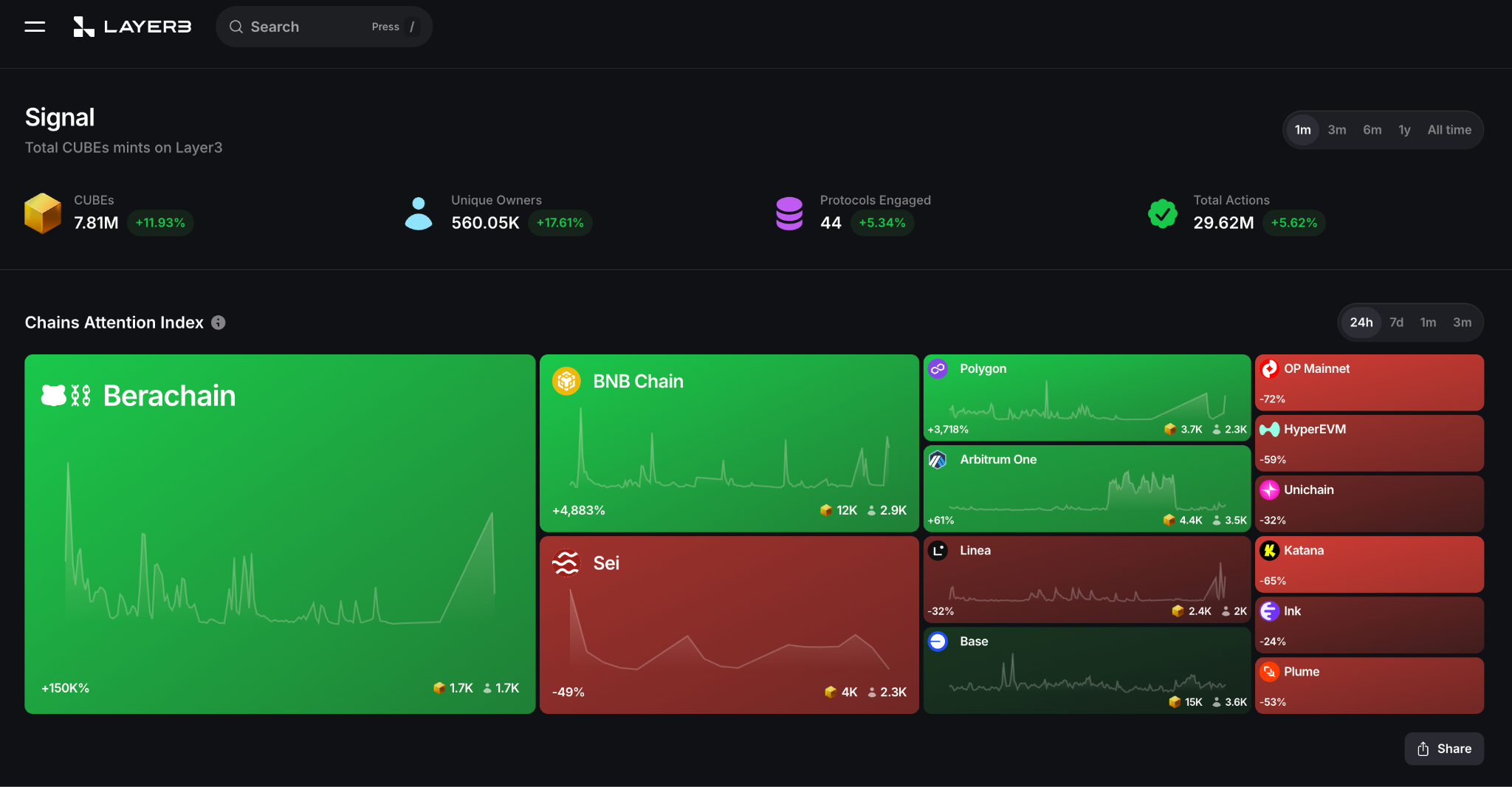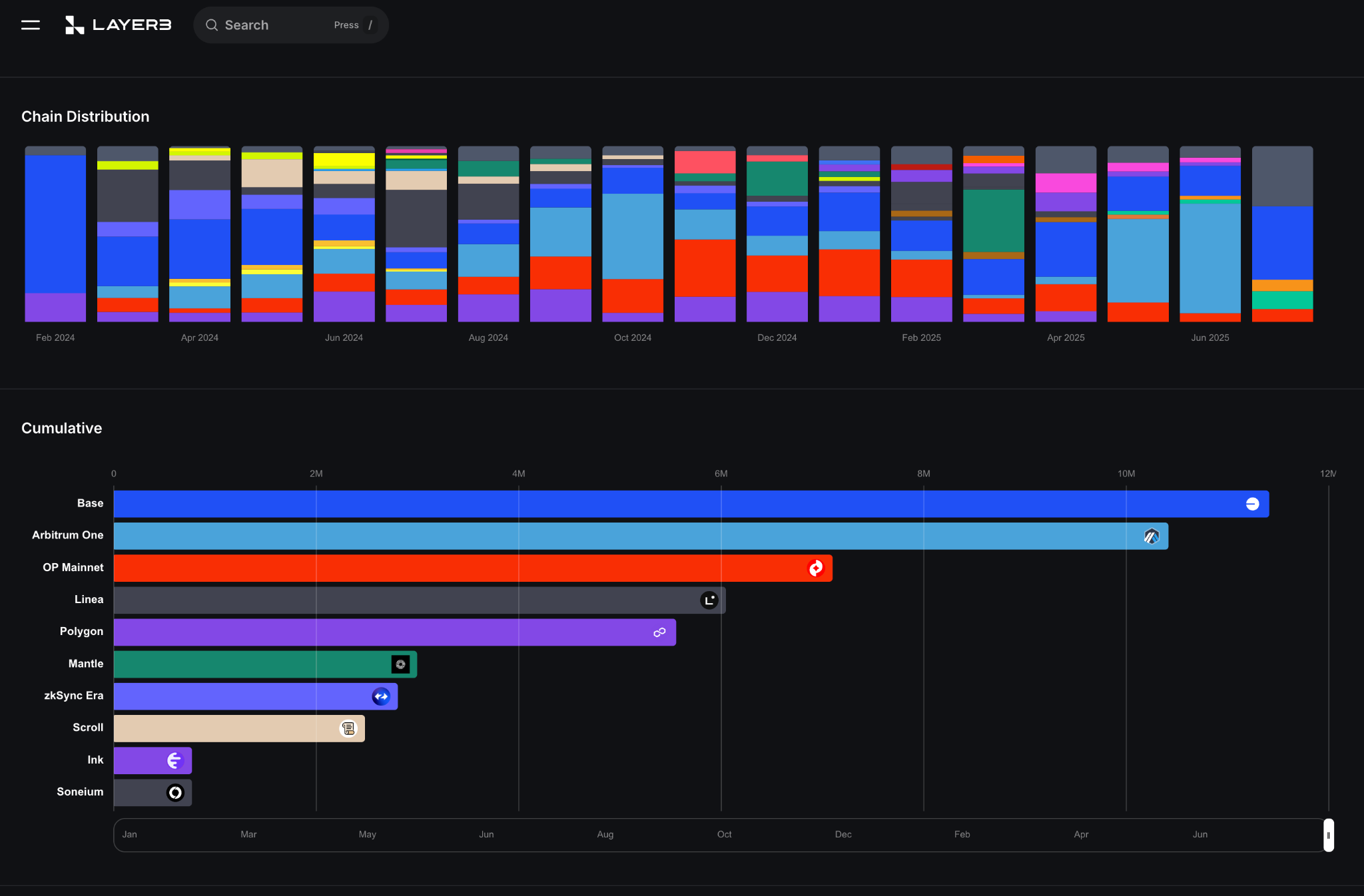
The Web3 world’s obsession with “hype” has never ceased. Whether a new protocol suddenly goes viral or an entire sector (like InfoFi) becomes the focus of capital, the phrase “everyone is talking about it” often becomes the reason to enter the market.
But the problem is: volume ≠ traction; mindshare should not only exist in the community but should be visible on-chain.
True valuable hype is not just about who is talking, but how many people actually took action after the talk — opened their wallets, completed tasks, interacted with protocols.
This is precisely why Layer3 launched Signal: a dedicated on-chain attention metric designed for Web3, helping you identify which protocols are genuinely engaging real users and prompting action, rather than just existing as topics in chat rooms.
Layer3 Launches Signal: Real-Time Metrics of On-Chain Attention

In mid-July, Layer3 officially launched its new product, Signal. Rather than being just a tool, it is a way to re-understand the Web3 world — it doesn’t care how loudly you speak, but whether you truly attracted users to “do something” on-chain.
Signal claims to be an “onchain relevance index,” aimed at capturing whether a protocol or project has genuinely attracted on-chain participants. It’s not about who shouts the loudest or has the most interactions, but: did anyone take “action” on-chain? What was completed? Are they willing to pay Gas or use their real identity for these interactions?
This shift in perspective may be a necessary step for an already highly gamified on-chain world.
Not Starting from Scratch, but Refining Three Years of Data Accumulation
The launch of Signal is not starting from zero but is built on the data foundation accumulated by Layer3 over the past three years. As one of the most active on-chain task platforms, Layer3 has:
Real interaction records from 3 million active users
Over 200 million task completion actions
60 million verifiable credentials
Tracking across 40+ public chain ecosystems
This data is not just cold, hard numbers but is filled with meaningful participation traces. For example: Signal can identify that even if a task has 10,000 completions, if only 100 participants completed it, each doing it 100 times, then this “hype” is actually questionable.

Such judgments were not possible with community data alone in the past.
How is Signal Calculated? It’s Not About Completion Numbers, But the Authenticity of Actions
Signal is not a simple leaderboard; it has a set of metrics focused on “who did what and why they did it.”
Its main scoring logic combines:
The proportion of independent participants
Task conversion rates and the depth of initiation behaviors
The complexity of tasks or interaction behaviors (Is it just a single click? Does it include on-chain signatures or transfers?)
In other words, if a protocol can attract a large number of real addresses to complete meaningful actions (such as staking, voting, minting, etc.), its Signal value will relatively increase.
This allows Signal to serve as a proxy for product traction and real pull, rather than the bubbles created by marketing activities.
All About “Hype,” But What Are We Looking At? - The Fundamental Differences Between InfoFi, On-Chain Data Tools, and Layer3 Signal
In recent years, many products have emerged in the market aimed at helping users grasp “what the crypto world is paying attention to,” from InfoFi-like projects focusing on narrative integration to traditional on-chain data analysis tools. While these tools seem to be doing “hype tracking,” their starting points and handling methods are actually quite different.
InfoFi track products focus on understanding what the community is discussing and how public opinion is changing. Their value proposition is: there is too much information, and users need a more efficient digest system to organize discussions, news, and sentiment trends. These tools mostly rely on AI, keyword aggregation, and source aggregation, belonging to the “editorial layer of narrative perspective.”
On-chain data analysis tools, on the other hand, are centered around open queries. They provide a complete set of on-chain databases and query languages, allowing users to set their own conditions and pull the data they care about. These tools emphasize flexibility and transparency but also impose a higher technical threshold on users.
Signal’s starting point, however, is that there are actually a lot of real participation behavior signals hidden on-chain, but no one is helping you sort out the key points.

Signal does not let you input query conditions; instead, it directly tells you: how many people are genuinely participating in this protocol, what interactions have been completed, and what proportion of overall attention they occupy. It is a behavior-based real-time scoring system, not a data querying tool or an information aggregator.
We can understand the division of labor among the three as follows:
InfoFi-like products help you understand “what everyone is talking about”
Data analysis tools help you check “what you want to know”
Signal actively tells you “what is really happening right now”
None of these three types of tools is the best; rather, they correspond to different information needs and decision-making scenarios in Web3. You can first use an information aggregation platform to understand the current mainstream narrative, then use data tools to verify details, and finally return to Signal to assess whether there is really traction, behavior, and momentum behind these narratives.
What Signal aims to fill is that long-ignored observational dimension beyond noise and charts: real on-chain traction.
Next Steps: Predictions, API, and Commercialization Models
Layer3 does not shy away from the fact that Signal will not always have a free version. In the coming months, a Premium Plan will be launched, expected to include:
Real-time trend predictions and potential hit protocol alerts
On-chain task and activity performance analysis (campaign benchmarking)
API access features for data teams and funds to establish custom strategies
Custom dashboards and notification modules
For a product that already has 1.1 million active users, such extensions are natural and also mean that Layer3 is positioning Signal as one of its core engines for the next phase of growth and commercialization.
Conclusion: Attention Itself Also Deserves a Fairer Measurement
The emergence of Signal is a correction to the past methods of judging on-chain hype. It is not meant to replace the volume models of Twitter, Discord, or Notion, but to provide a ruler that is closer to the essence of behavior.
While everyone is busy debating who is the loudest, Layer3 chooses to observe who is actually taking action. This perspective may very well be the starting point for the next wave of crypto product design and research.
Signal is now open for experience: https://app.layer3.xyz/signal
免责声明:本文章仅代表作者个人观点,不代表本平台的立场和观点。本文章仅供信息分享,不构成对任何人的任何投资建议。用户与作者之间的任何争议,与本平台无关。如网页中刊载的文章或图片涉及侵权,请提供相关的权利证明和身份证明发送邮件到support@aicoin.com,本平台相关工作人员将会进行核查。




